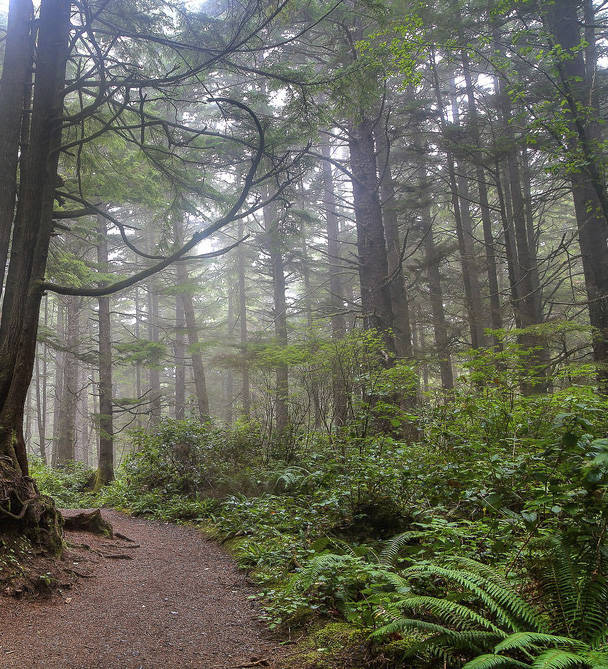By Tom Groenewal
January 2, 1992
Cool this morning in the low 40’s and the clouds have a few breaks to let the sunshine on the banks of the Quillayute River. Steelhead stories abound from TJ.
“Chris just caught five; next day, Mel Moon just caught a bunch in Chris’ spot.”
That’s good information as long as it is accompanied with directions on where they are being caught and how they are being caught. “That’s all I know,” he says. Yeah, I’ve heard that before. No one gives out their fishing spot.
So, I am down on the low end of the Quillayute River, less than 3 miles from the sea, with a hook and line trying to catch a beautiful ocean steelhead. I’m in a grassy area, out in the open and 10 feet above the river. A Quileute Fisheries Enforcement boat with two crew motor up river and pull next to me. “Hi, they yell.” “Hi.” “Do you have your duck license?” “No, I’m fishing.” “Sir, you are likely not to catch a fish here.” I don’t ask why. Damn, this is obviously not Chris’ spot. Probably a good place for ducks, but I don’t see any.
I can buy a fresh steelhead from TJ (when I find him on a day he gets one) or at the Quileute Seafood Co. for $2.00 lb. I break down and buy one.
There has been about 2.5 inches of rain in the last 36 hours. All 3 of the major rivers are filling the Quillayute with sediment-laden water, turning it a light brown with a visibility of approximately one foot.
A few ducks fly by and they quack at me, probably. The Quileute Fisheries boat returns 45 minutes later towing an aluminum rowboat back down river to the harbor. A Coast Guard helicopter flutters overhead flying down to the Coast Guard base at the river mouth, and, a few minutes later flies past me again and disappears upriver. The lower river is a busy place.
I don’t hook a fish after an hour and a half, so I pack up and head out to explore the coast near the 2nd beach access. A small trail, which needs some imagination to see, cuts off the main trail and leads to an outcrop high above the Pacific looking north onto 1st beach and the village. I get distracted and stay for the afternoon. This is my first secret spot; don’t tell anyone.
January 3, 1992
Two new storm fronts are moving off the Pacific from the Southwest. It is predicted to be back to the typical rainy, windy weather for the next week or so. I have a weather radio which picks up NOAA weather radio out of Neah Bay where the Strait of Juan de Fuca meets the ocean. They report winds gusting from 50 -70 mph and a change in the weather pattern from west to southwest beginning this afternoon.
I gather my stuff: rain gear, hat, pack, binos, camera, map and set out for the 2nd beach trailhead to explore the beach.
It’s not raining at the trailhead but everything is dripping, so I put on raingear. I head down the trail a short distance heading west to the coast through awesome old growth.
I turn off the main trail through ancient trees, six feet in diameter, that have died of old age and fallen across each other a long time ago. New trees are sprouting from the decaying wood, growing roots that straddle the mother trees. I work my way climbing over and around these huge fallen giants. In between the stacks of 125’ timbers are walled in pockets, creating rooms of forest floor covered in thick layers of moss. Under these rotting trees are sometimes found what seems to be a den tucked back in a hollowed cave of trees. I have seen these cavities before and I really don’t want to find a bear, or bobcat, cougar, or any animal for that matter.
Moving through a grove of ancient trees without a trail offers experiences and sensations not found walking on a trail. Always, if you want to get away from people move a few hundred yards off the trail and you will be alone.



